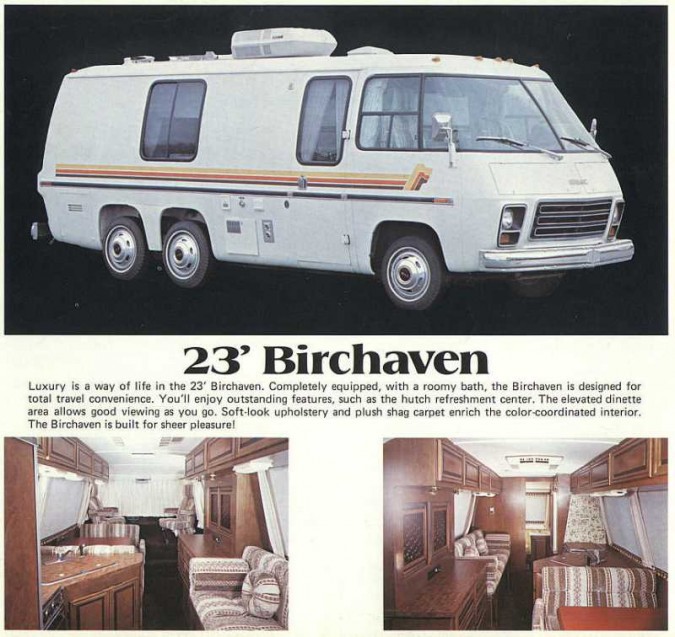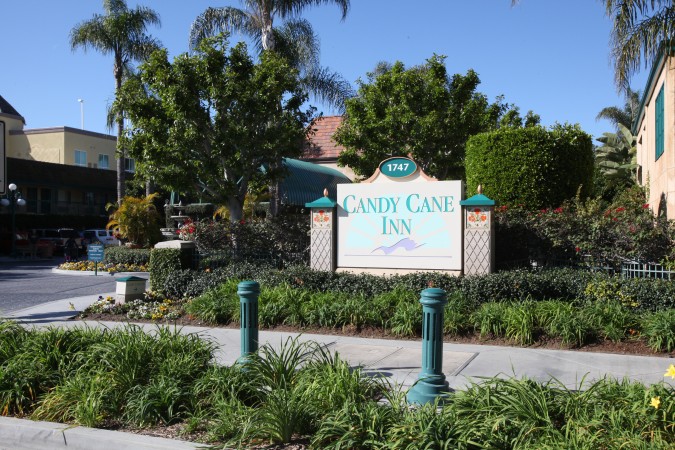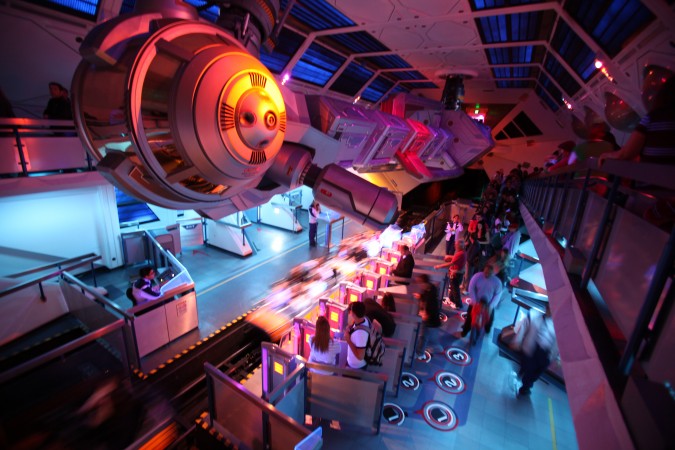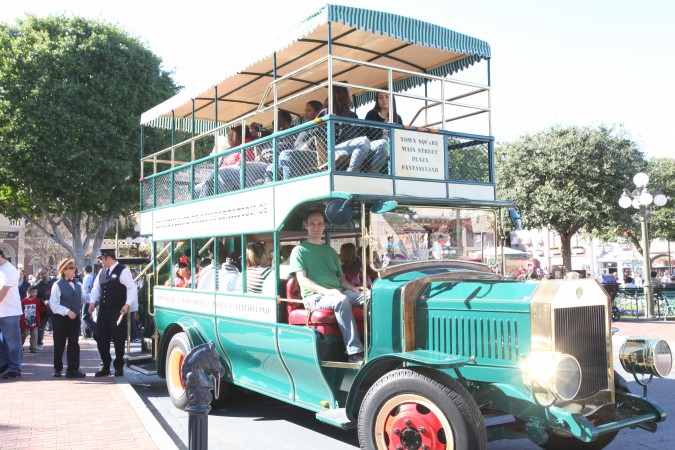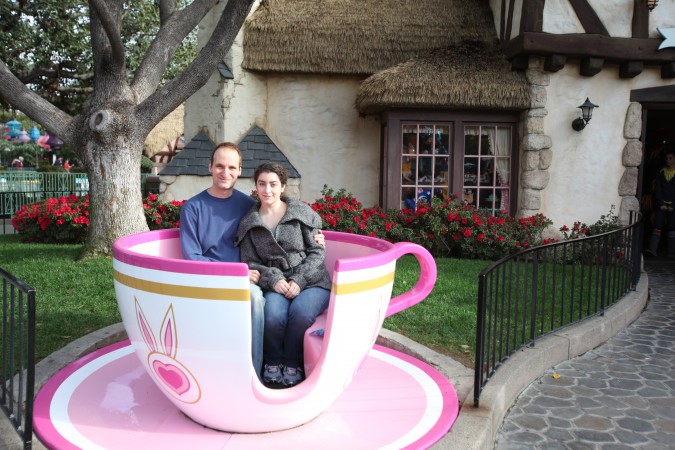Archive for February, 2010
Canon DSLRs are serious tools for video
I was looking at videos tagged with 5DM2 on Vimeo today. Vimeo hosts the videos on this blog, and can be thought of as a high end YouTube without ads. 5DM2 is short for Canon 5D Mark II, the digital still camera that shoots outstanding video as well. It’s the camera I use for the stills and video on this blog.
I came across a thought provoking video tonight that shows a Canon 7D matched up with Panavision lenses. Panavision lenses are for Hollywood style movie cameras. Panavision rents rather than sells their cameras, and the lenses can’t be rented without a camera, so it’s unclear how likely it will be for anyone to actually use a Panavision lens with a Canon camera. Also, if one were able to buy a Panavision lens, I suspect they would cost as much as a new car each.
The Canon 7D shoots at a lower resolution than my camera, but it shoots at 24P, while my camera only shoots at the video rate of 30P. Serious film fans mostly prefer 24P, which is the rate film motion picture cameras shoot at. The video from the 7D thus looks more film like than video from the 5D Mark II. I prefer the later, as I also shoot stills, and the 5D Mark II shoots at 21 megapixels and has a full frame sensor, while the 7D has a cropped sensor with a lower number of pixels.
This 7D/Panavision experiment was conducted by Zacuto USA, which rents and sells professional motion picture equipment.
Here is a simply outstanding clip of the results that were obtained with the 7D/Panavision rig. This clip has all the quality of a major Hollywood blockbuster from what I can see on my laptop. The low light capability of the Canon DSLRs are amazing.
My secret hobby of converting a bus to a motorhome
I have a hobby that I’ve been shy about disclosing. But, I have come to regard this hobby as vital research for a venture I would love to start, low cost housing built from ocean shipping containers. Such housing is available in Europe and many other parts of the world, but it’s rare in the United States.
My ‘secret hobby’ is converting commercial buses to self-contained residential dwellings on wheels, commonly referred to as bus conversions.
The link between bus conversions and shipping container homes is that both domiciles are long narrow boxes made of metal. A bus conversion is the more demanding housing type, because on a bus, one has to install all the utilities that a fixed dwelling can outsource to the city or town. So if I can build a bus conversion, I can build shipping container housing. This turns my interest in buses into legitimate research.
When I was a kid, I dreamed about camping in a motor home or trailer. My parents didn’t care for this idea, and as a family, we only went camping in tents.
One of the first motor homes I remember was the Winnebago Brave. This model had a distinctive silhouette unique to this model.
The next motor home I remember was the GMC motorhome. Years ago, my grandmother Elsie Battaglia owned a beach front house in Seal Rock, Oregon. Her next door neighbor bought a brand new GMC motor home, and I fell in love with it. I recall the price of $30,000 vividly, because when grandma sold her house a few years later, she got $25,000 for it. So this motor home cost more than a beachfront house did. The GMC motor home was very expensive when new, and today, restored models from that time also cost about $30,000 and can sell for over three times that if in really fine condition. What I liked about the GMC was its curvy and unified look. It was as far from a rolling box as anything other than an Airstream trailer. The GMC also had three axles, which made it look very serious, like a Greyhound bus. Very few other motor homes had or have three axles, and I know of no other motor homes as small as the GMC that have three axles. Although the GMC seemed huge to me when I was a kid, today it would be classified as a small motor home, at just 23 to 26 feet long, depending on the version.
I have a bus conversion that I bought already converted. It’s a 1967 MC-5a model from Motor Coach Industries, currently the largest manufacturer of commercial highway busses in the United States. I bought my conversion in 2001 from John Ridly of Santa Rosa, California. My dream at that time was to drive to New York City over a period of months to really see the country first hand. In 2002 I made the trip. I made the significant mistake of traveling in July and August, when it was just too hot to be traveling in the particular conversion I had bought. But I still enjoyed the trip, and I’m glad I took it. Fuel was only about $1.75 a gallon then, thankfully.
I videotaped the entire drive from San Francisco to New York City using a video camera I mounted in the passenger window. I stopped hourly to replace the Mini DV tape in my camcorder. I brought a global positioning receiver with me, and I videotaped the screen showing my location at the start and end of each video tape. I did this so I could plot the trip on a map one day.
I mounted the camera on a shock mount that I made to smooth out the image. I plan to edit the 90 hours of footage into a 91 hour movie I will post on this blog. This is a big project, and I’ve never watched the 90 hours of tape yet, so please don’t hold your breath waiting for the movie to appear here. I kept the camera rolling every minute I was driving, with the thinking that the tape may be very boring now, but very interesting far in the future, where people could see all the funny stores, price signs and driving habits of the day.
I was drained of energy when I returned from my two and a half month cross-country journey. It was just so hot that I couldn’t sleep some nights, as I could not run the generator through the night because it was not sound proofed, and it was located under the bed in the back of the conversion. I also did not have a ceiling fan, which would have helped a lot. I put the bus into storage for a couple of years after I got home, and it was covered with green moss when I finally took it out of storage and re-registered and insured it. It took two days to scrub clean. I moved it out from under the tree I had parked under, and now it does not get moss on it when parked for long periods.
When I met Monika, the woman I would later marry, I hesitated for a couple of months before I told her about my bus. I told her when we were staying at her parent’s vacation cabin three hours east of the Bay Area. I told Monika I had a ‘vacation home’ as well, but that it was on wheels. Thankfully, she wasn’t freaked out, and she agreed to go on trips with me. We went to Monterey, California and Yosemite National Park in California, among other destinations.
Fuel prices rose, and I felt guilty about driving a 40+ year old bus that gets just 6.4 miles to the gallon. Old buses have two-stroke engines, which are dirtier than modern four-stroke engines found in all current trucks and buses outside of the military, which still uses two-stroke engines because they are supposed to be more dependable in wartime because they more frequently contain no electronic controls that could be damaged by electronic warfare.
I decided to upgrade to a modern four-stroke engine bus with modern emission controls, and will write about the choice I made in an upcoming blog post.
Disneyland Vacation
I just got back home from a weekend at Disneyland park in Anaheim, California. My wife Monika, her parents, her brother and her brother’s girlfriend were there too. This was my first time at Disneyland with Monika’s family. We stayed at the Candy Cane Inn, which is a five minute walk from the front gate of the park.
Monika and I have been to Disneyland before, just the two of us. We went there on our first vacation together in 2006, so it holds a special place in our hearts. I wasn’t a fan of Disneyland before I met Monika, but she has shown me its charms. In fact, Monika signed me up for an annual passport this trip, and I now have an ID card in my wallet with my picture on it, like a Costco card. Yikes.
I decided to bring my camera with me – not my point and shoot, but my good Canon 5D Mark II that shoots outstanding video. Here are a few of the videos I shot. The first one if of the “It’s a Small World” ride. Since this is a peaceful slow moving ride, I just kept the camera on for the entire ride. I used a wide angle lens, and the result was pretty good I thought.
This next video I shot on the large Carousel.
This next video is of a parade of sorts. It’s not really a parade, as the performers move into position and then perform an extended show. Then they move a block or so away and do the whole extended show again. I think there are three such shows in a row, and the sets of shows happen twice per day. The show is called Celebrate or something similar. It was entertaining. There is a segment where the performers are on stilts. Have a close look at the stilts, which have a large area of contact with the ground. They look much safer than traditional wooden stilts.
I got some good stills as well, including this one of the boarding area for the Space Mountain indoor roller coaster. This was a time exposure, since it’s dimly lit. Note how the roller coaster car is blurred as it was just coming to a stop when I took this.
I love buses, even Disneyland buses. I got to ride in the front seat right next to the driver, in the double decker Disneyland bus inside the park. This bus is just for fun, as it never goes faster than five miles per hour, so the lack of wind protection for the occupants upstairs is acceptable.
Of course I shot video of my ride on the Omnibus, which you can see below.
Here’s a nice shot of me with my wife Monika, in a pink tea cup.
I’m looking forward to my next trip to Disneyland, which surprises me.
Dinner for Jerry Engel of The Lester Center at UC Berkeley
On December 10, 2009 I attended a dinner at the Haas School of Business at University of California at Berkeley to thank Jerry Engel for his leadership of The Lester Center for Entrepreneurship and Innovation. There were a lot of people in attendance, including Jerry’s son and wife.
I’ve known Jerry since about 1992. I met him while I was working at Cooley Godward Kronish, which at the time was a sponsor of the the Lester Center. Cooley received ten passes per month to the Entrepreneurs Forum, which Jerry had started in about 1991. I didn’t introduce myself to Jerry right away, as I was pretty shy back then. Jerry probably didn’t know me until 1998 when I really started serious work to raise money for Hotpaper.com, my first Internet startup.
Jerry stepped aside as Executive Director of the Lester Center recently to assume the new role of Faculty Director. This dinner was to honor and recognize his leadership.
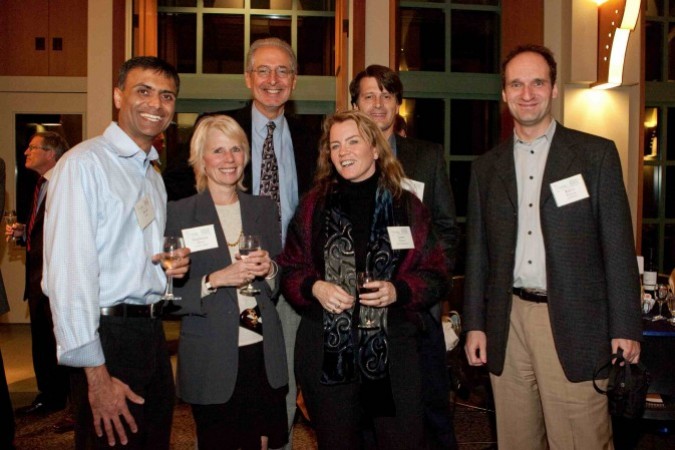
Keval Desai, Stephanie, Jerry Engel, Laura Oliphant, John Hanke and Kevin Warnock, December 10, 2009. Photo by Bruce Cook.
I am posting this today because I received the pictures from the event from Bruce Cook yesterday. I’ve also known Bruce for a long time, as he’s been a fixture at most every Entrepreneurs Forum that I’ve been to. He’s an independent professional photographer that covers many of the events at Haas. We talk shop about the latest cameras when he has a spare moment. Bruce is a real pro, and is particularly good at gathering people together for group shots when he only has a minute or less to get the shot. Bruce graciously gave me his permission to use these shots on my blog. Thank you Bruce.
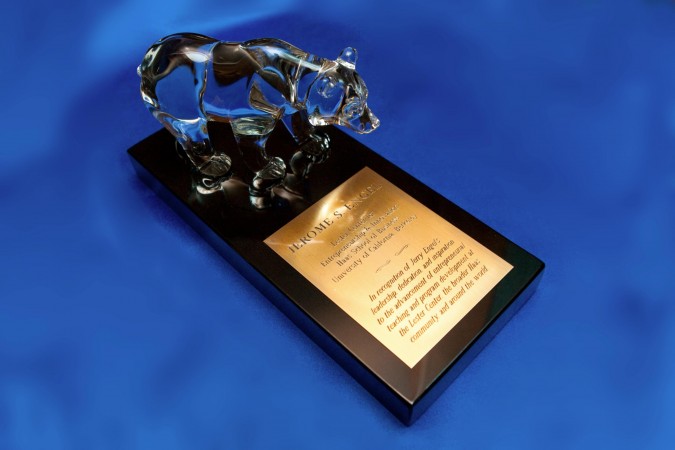
Award presented to Jerry Engel in recognition of his leadership of The Lester Center, December 10, 2009. Photo by Bruce Cook.
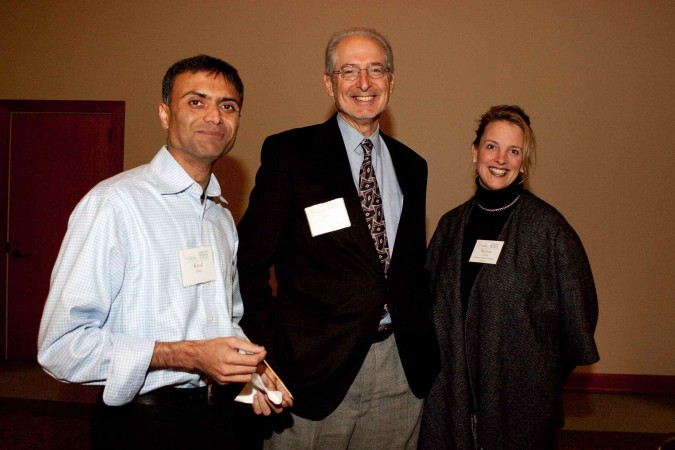
Keval Desai, Jerry Engel and Melissa Daniels, December 10, 2009, at Haas School of Business at UC Berkeley. Photo by Bruce Cook.
Keval Desai and Melissa Daniels were at the dinner. It was Keval who suggested to Jerry in 1999 that Haas stage a business plan competition. Jerry was cool to the idea, but Keval and Melissa convinced him, and the competition was born. I was a finalist in that first competition with my startup Hotpaper.com, and I firmly believe I would have not sold my company for as much as I did and when I did if not for Keval and Melissa.
Hotpaper, my first Internet startup, gets acquired
 This is ancient news. In August, 2000, I sold my first Internet startup, Hotpaper.com, Inc. I am writing about it now because I stumbled upon the public filing for the acquisition today on the Edgar website. The filing brought back old memories, and I wanted to say a few words about the experience of selling a company during an economic downturn.
This is ancient news. In August, 2000, I sold my first Internet startup, Hotpaper.com, Inc. I am writing about it now because I stumbled upon the public filing for the acquisition today on the Edgar website. The filing brought back old memories, and I wanted to say a few words about the experience of selling a company during an economic downturn.
It was an exhilarating experience. It was difficult. It was fun. It was heartbreaking. It was educational.
Here’s the SEC Form 8-K the acquirer filed in connection with the acquisition. I’ve embedded it into this post via the cool document site Scribd, which thinks of itself as the YouTube of documents.
Hotpaper Aquisition Public Filing
Hotpaper made document assembly software that was well suited for the Internet and Intranet. The premise was that it’s difficult to write complicated documents from scratch. It’s much easier to start with a template. It’s sometimes easier yet to use document assembly software that prompts you for answers to questions, and then uses your answers to automatically fill in a template. This is the core idea behind Turbo Tax, the tax preparation document assembly software that is perhaps the most popular document assembly software in the US.
Hotpaper didn’t have anything to do with tax forms – they’re far too complicated for a tiny startup to automate, especially when you consider you have to make dozens of versions per year for all the states with an income tax.
Hotpaper concentrated on business and legal documents. Customers would send us their documents and Hotpaper would build a question front end and host them on the Internet for a monthly fee. One of our large customers was Salesforce.com. We built a private API for them so their CRM users could automate their own custom documents. Their customers could even write the questions and build the templates themselves, without having to work with any of our employees.
We were approached in May 2000 about selling Hotpaper. The acquirer, GoAmerica, which is now named Purple Communications, at the time was a nationwide aggregator of wireless connectivity for Blackberry and Palm, the two big handheld assistant makers of the day. Purple had competition in this agregation business from companies with much higher market capitalizations. Purple wanted to differentiate their connectivity offering, and they identified Hotpaper as one way to accomplish that goal.
Since it’s tough to type a long document on a Blackberry, the idea was to make it possible for users to just have to answer the questions that drive an automated template filler that would run on the Hotpaper web server. The user would just need a web browser on their handheld, and having this, they could generate very complex documents, provided there was a template on the server for them.
Purple built this system after they bought my company. They called the service Mobile Office. It won top honors from CNet.com two years in a row — best enterprise application if I recall correctly. CNet was the TechCrunch of the day, and had a multi-billion dollar market value.
I was fortunate to sell Hotpaper to Purple. They had completed a public offering in April, 2000, just after the stock market began its long collapse. They raised $160,000,000 and had the money in the bank when they met us the next month. They offered us $10,000,000 and agreed to assume the stock option obligations to my team, so the overall consideration approached $11,000,000. We accepted their offer with almost no changes, as there was outright panic in the air, since the stock market had dropped dramatically from its recent all time high. Remember, the Nasdaq was in the 5,000 territory, much higher than it’s ever been since, a decade later. I also liked the Purple plan for Hotpaper, and was a believer in the future of mobile devices. I was on board and enthusiastic, though I did have a few anguished thoughts along the way since I was selling my baby I had been working day and night on for six years.
One of the reasons I was so enthusiastic is that I had been dreaming of mobile document creation for years, before there were handheld wireless devices on the market. I even built a prototype where I attached a Ricochet wireless modem to the bottom of a non-wireless Palm handheld and connected it to the palm via a serial cable. Ricochet built a wireless network in San Francisco in the 1990s that offered speeds similar to a 28K phone modem. It offered an unlimited data plan for $29.95 a month. The modem was hefty, about a pound and about the size of two iPhones stacked up. But it gave the Palm wireless capability in the San Francisco Bay Area. There was a third party web browser for the Palm on the market called Hand Web. I bought it, and then I was on the web wirelessly in about 1998. I proudly showed the contraption to Jerry Engel, then Executive Director of the Lester Center for Entrepreneurship and Innovation at the Haas School of Business at the University of California at Berkeley. It didn’t work since there was poor wireless reception in the sturdy concrete building at Haas. But Jerry got the idea and agreed to help me. He joined the board of advisors at Hotpaper, and he years later agreed to join my board of advisors at my current company, Silveroffice, Inc.
Sadly, the world changed for Purple. The big wireless carriers came out with their own nationwide wireless plans, which limited the role for Purple. The eventually abandoned Hotpaper and their own business of selling connectivity for general use. They remain in business today as leaders in the small but vital field of providing wireless communications solutions for the deaf. My hat is off to them for their sheer tenacity to stay in business and help people communicate. I wish them all the best success, and I want to thank them for adding Hotpaper to their offerings, if only temporarily. The acquisition forever changed my life, and I am extremely grateful. I wouldn’t have the life I have now if not for Purple Communications.

